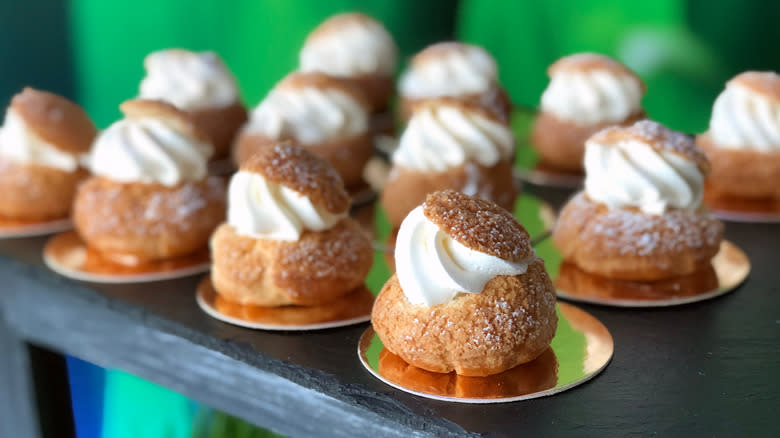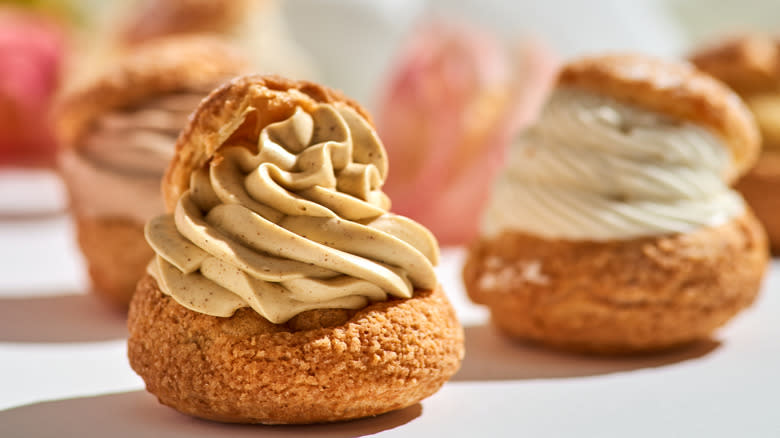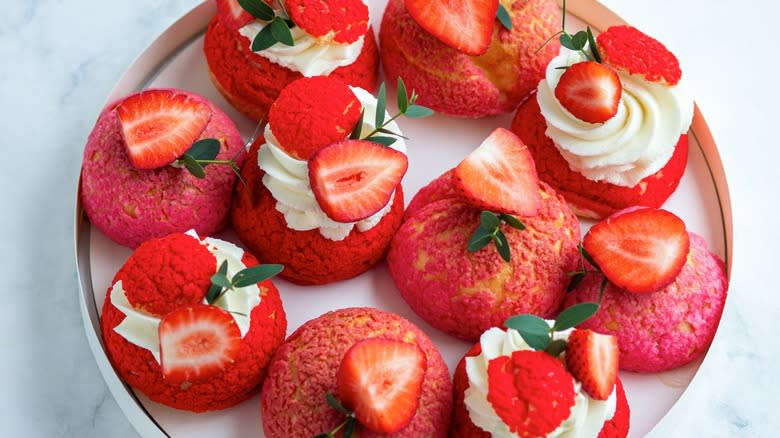What Makes Japanese Shu Cream Unique?

In the world of sweet bakes and desserts, Japanese confections can satisfy both the sweet tooth and the eye. A fantastic example is Japanese chocolate cream, namelaka, which rivals the renowned ganache. Japanese shu cream is another. Sure, its name may phonetically resemble the French choux pastry, and although the two also share an appearance, there's more to Japanese shu cream than tasty imitation.
Shu cream, also called shu kurimu, is traditionally a sweet, filled puff pastry. This may sound very similar to the French choux à la crème, but what sets the Japanese version apart is that its pastry tends to be softer and chewier. Shu cream pastry is made similarly to choux à la crème. However, one difference to note is that some of the ingredients typically used in shu cream differ from what is available in France or the U.S. For example, hakurikiko, a fine-textured soft wheat flour, is popular in Japan for baking and tempura because of its fluffiness after cooking. Outside of Japan, traditional choux pastry typically incorporates all-purpose flour, which ultimately changes the pastry's texture and taste, even if slightly.
Read more: French Cooking Tricks You Need In Your Life
The Many Flavors Of Shu Cream

Alongside this subtle texture difference, there's a more evident contrast in the flavors and shapes available in Japanese shu cream pastries. The classic French choux à la crème typically fills its hollow pastry puff with a simple custard filling. Japanese shu cream is available in popular flavors such as matcha and green tea, as well as worldwide favorites such as coffee, chocolate, and peanut butter, and fruit flavors like strawberry and blueberry.
In addition to the green-infused flavors, other notable varieties include salted chocolate, boiled wheat, brulee, and honey butter. The flavor of a shu cream is only limited by the baker's imagination, and new tastes and unconventional flavor combinations are not uncommon.
Changing the round shape of the shu cream pastry is also a note of originality. In the city of Atami, just southwest of Tokyo, a bakery began to create shu cream in the shape of a perfectly proportioned cube. It's a beautiful demonstration of how imaginative you can get with traditional recipes.
The Origins Of The Shu

Unlike Japanese mochi, which has a history in Japan dating back to the eighth century, choux pastry is believed to have been first introduced in the 1800s in Yokohama. During the 1800s, Japan ended its national isolation policy; prior to ending the policy, Japan had traded with very few other countries.
Yokohama, among the initial ports to open up to foreign trade, swiftly emerged as a cosmopolitan center for foreign ingredients and cuisine. During this period, French-born Samuel Pierre opened a French-inspired bakery in Yokohama. His introduction of choux à la crème to the region exploded, and bakers from all corners of Japan came to train and learn. This is believed to be the inspiration for the shu cream enjoyed by so many today.
However, Beard Papa's, a renowned baking chain in Japan specializing in cream puffs, claims the invention of these delectable treats can be attributed to a baker named Yuji Hirota. Beard Papa states Yuji opened the bakery in 1999 in Osaka and expanded his cream puff empire after perfecting the art of his pastries. It is now a global franchise.
It's common for a dish's roots to be controversial, and while the shu cream's true origins may be shrouded in mystery, its unique characteristics are a testament to its utter deliciousness.
Read the original article on Daily Meal.

